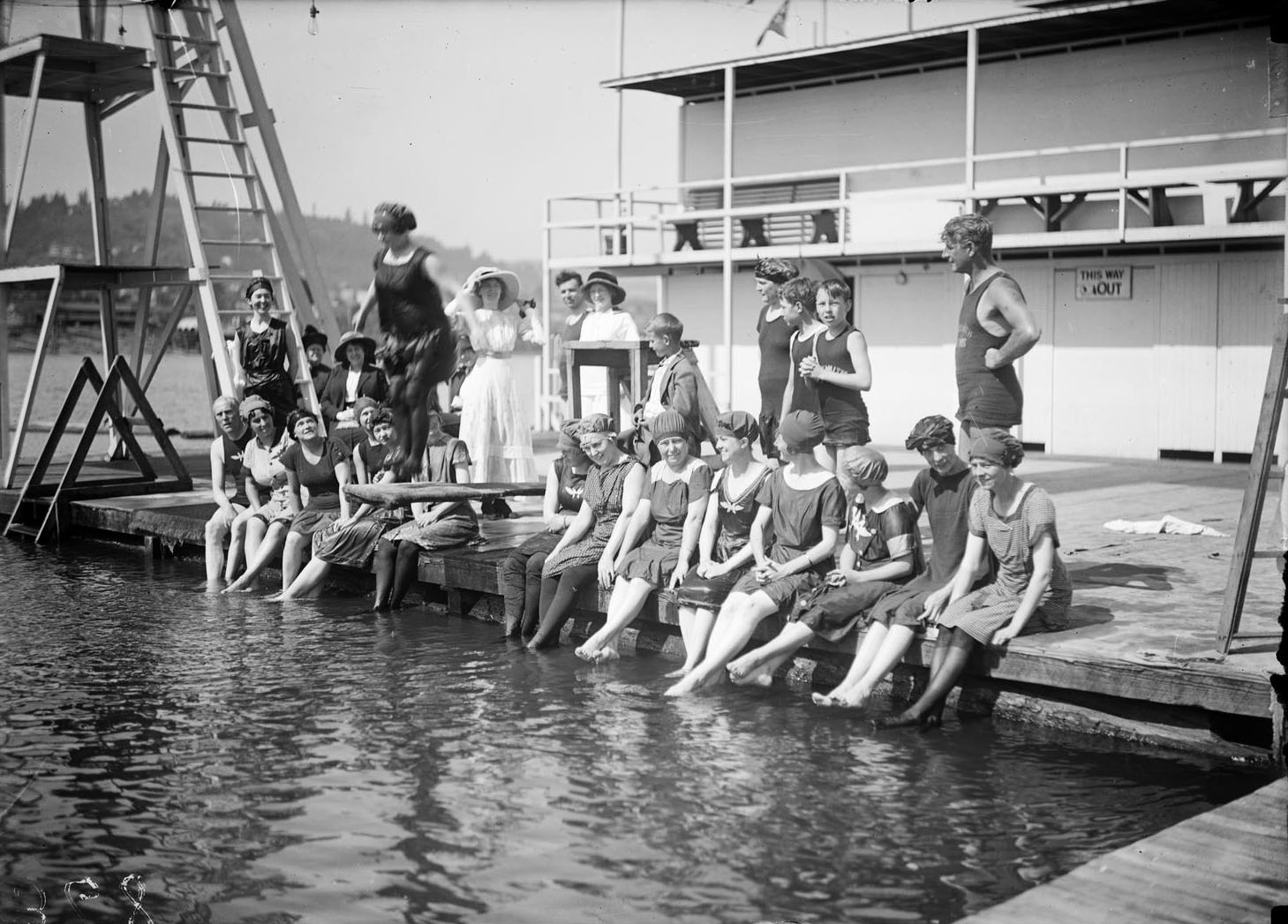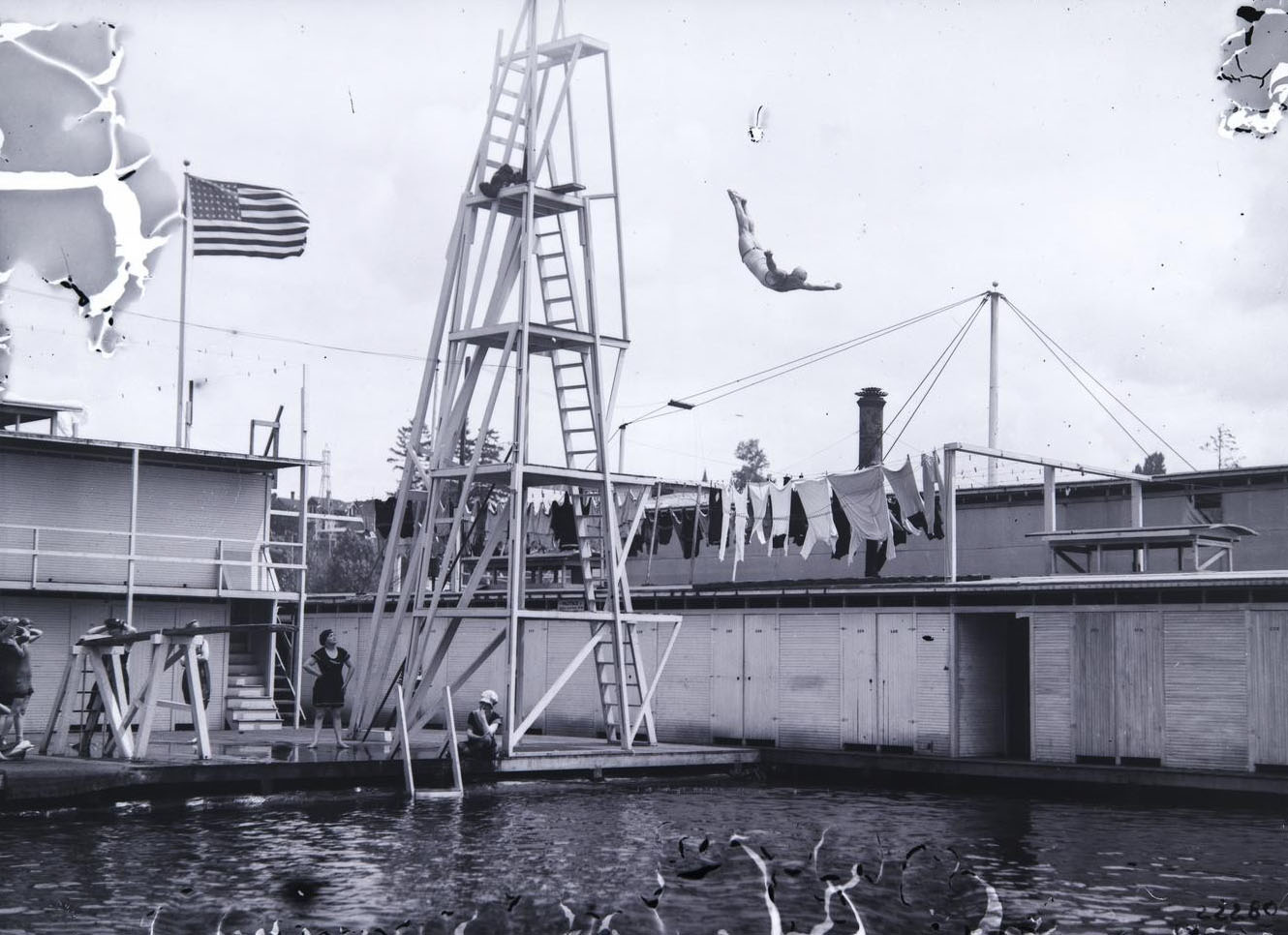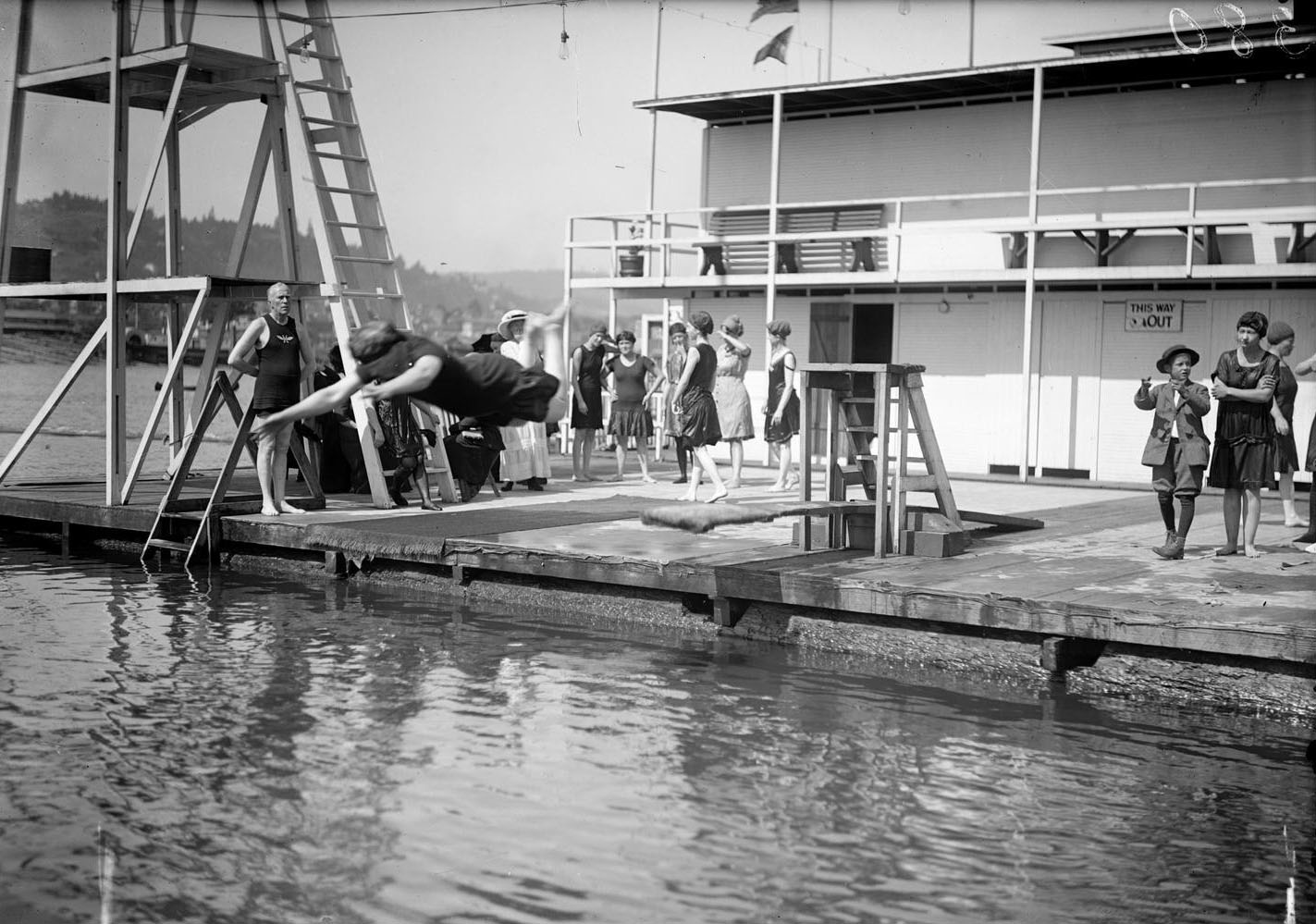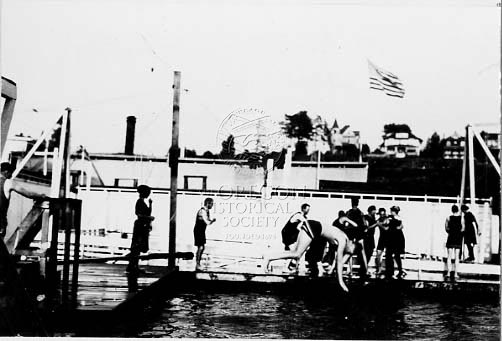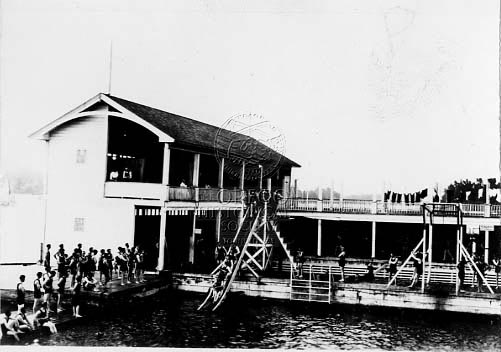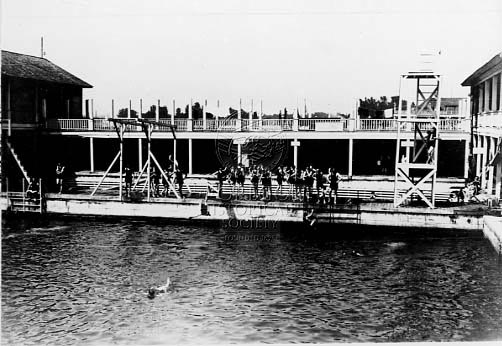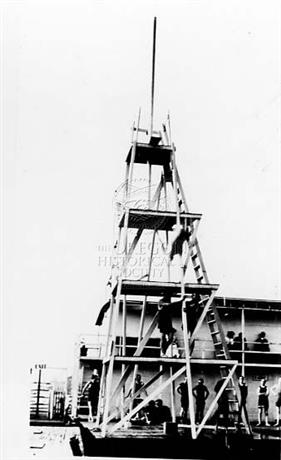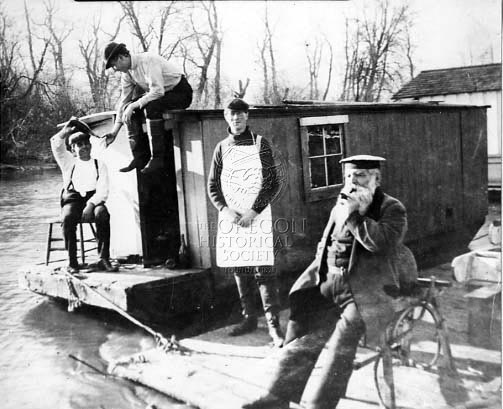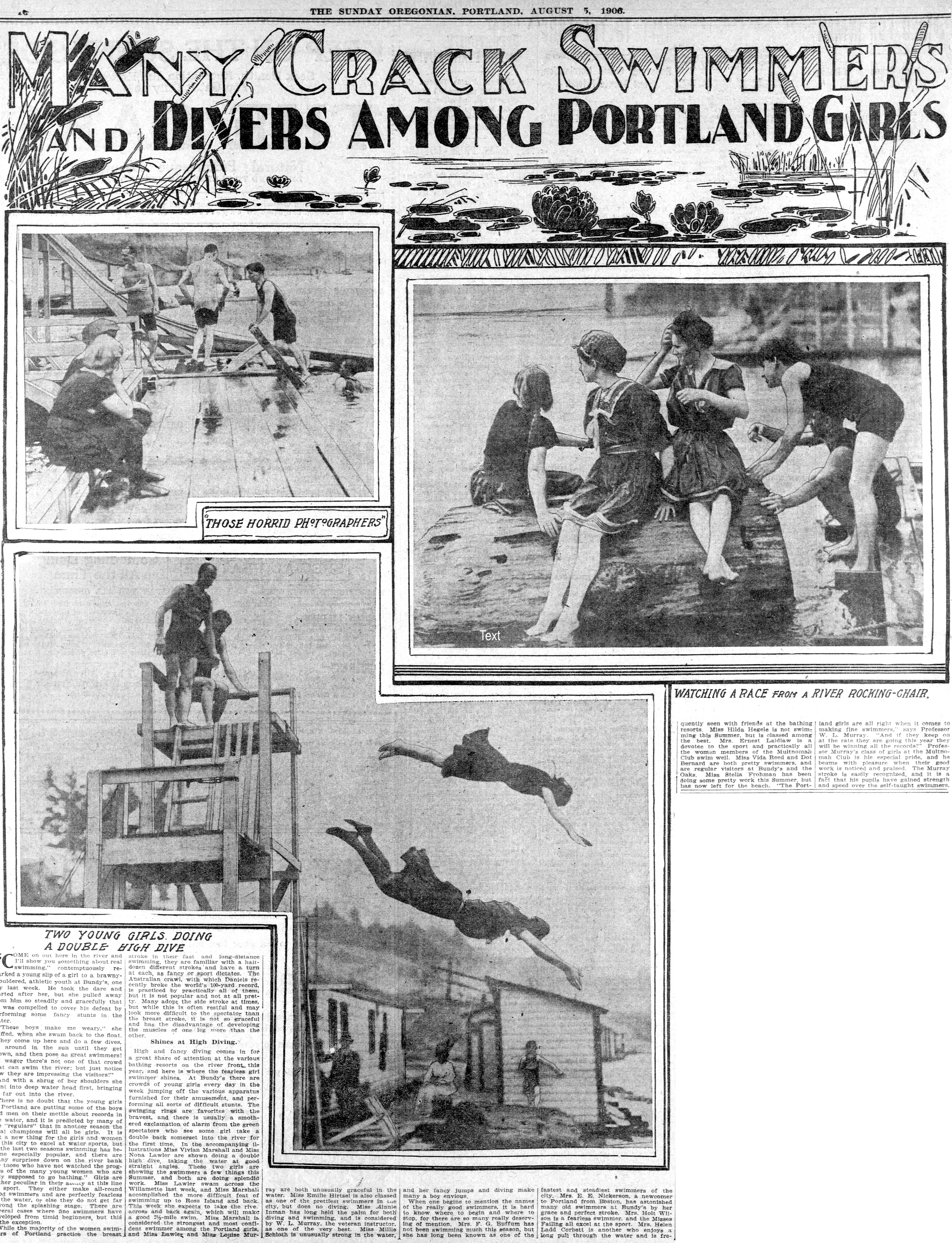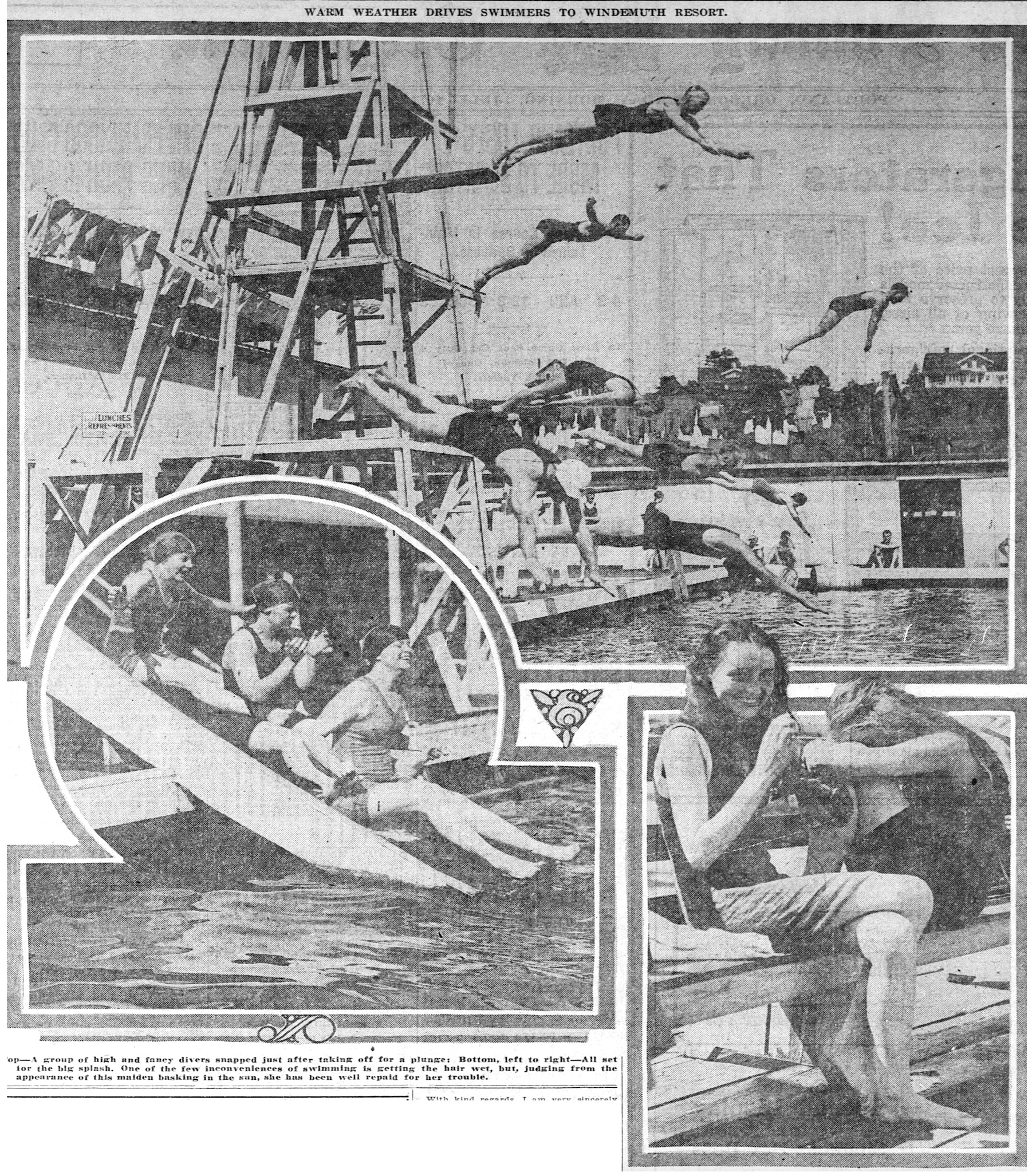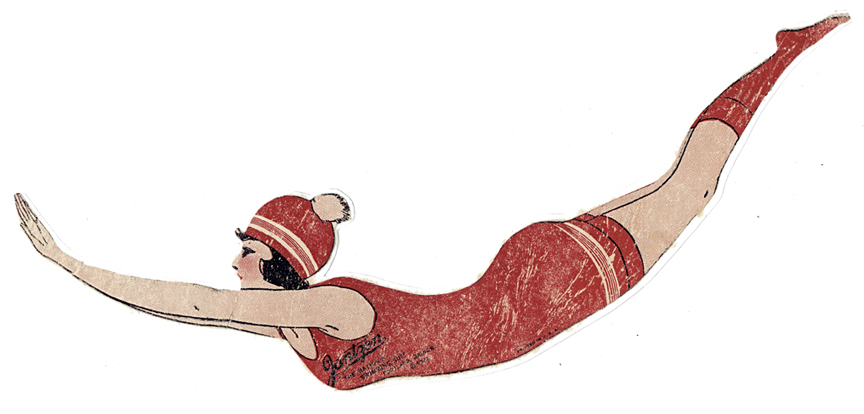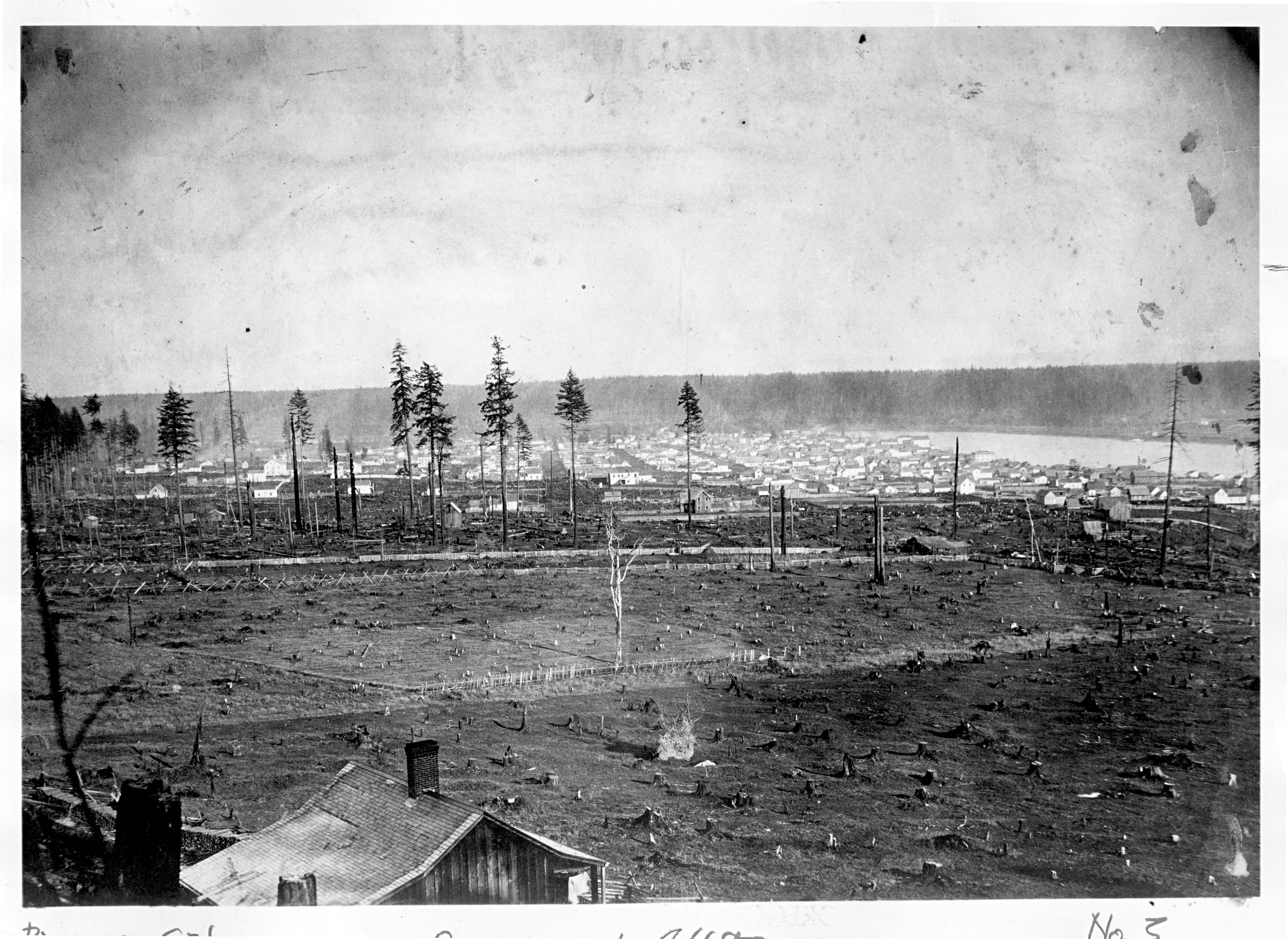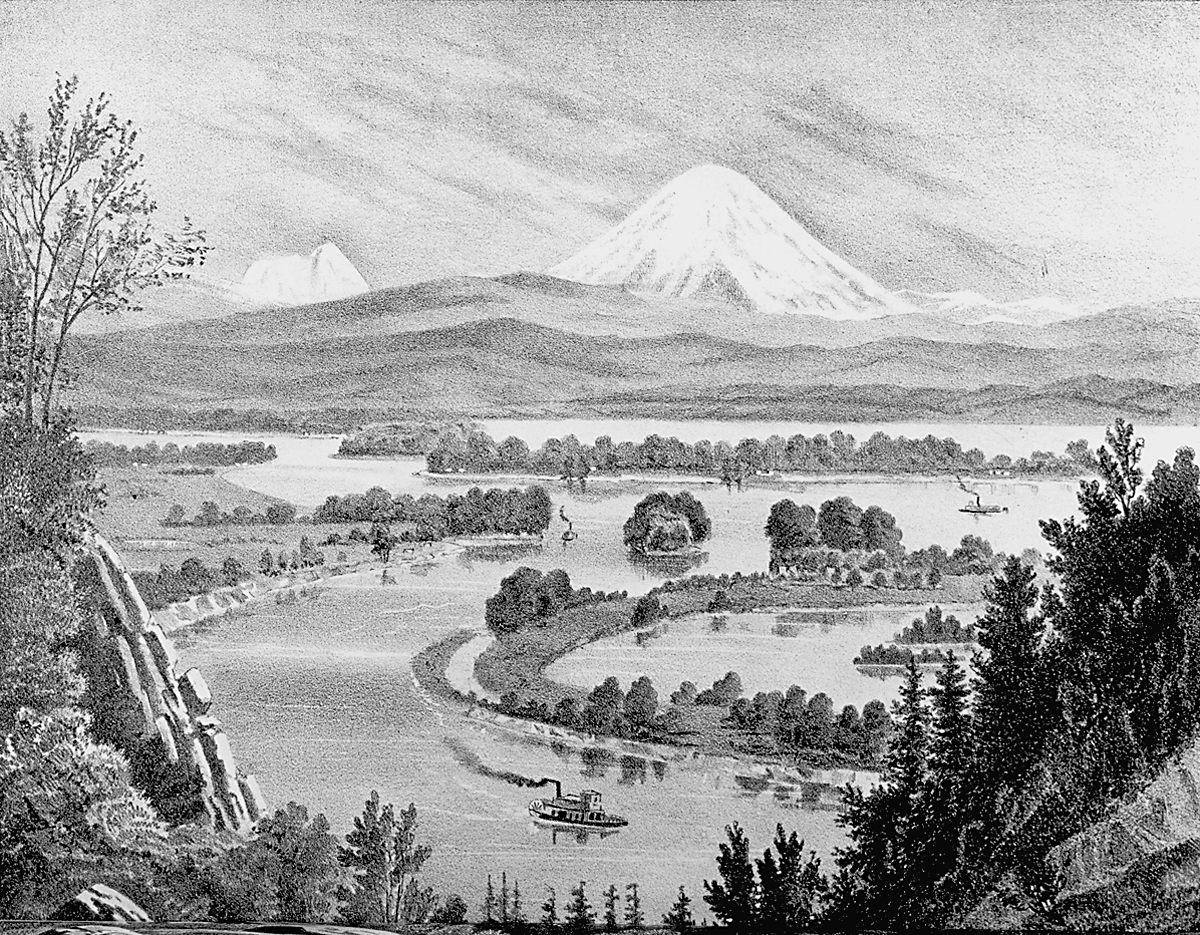From 1898 to 1924, the Willamette River near Ross Island, south of downtown Portland, was a popular place to swim, dive, canoe, and play in the water. Two popular and celebrated venues, Bundy’s Baths and Windemuth, provided fenced access to the river during the summer months, offering a measure of privacy for bathers and swim classes. The private swimming holes were used by tens of thousands of Portlanders until the 1920s, when waste and residue from sewage, pulp mills, and food packing plants overwhelmed the Willamette River and closed the river to swimming. The demise of Bundy’s and Windemuth signaled the end of that era’s love affair with the river.
Bundy’s Baths—where Portlanders met the river
Bundy’s Baths was a collection of changing rooms, a snack bar, and gathering spaces built on floats and pilings anchored to the east bank of the Willamette River at the foot of today’s Ross Island Bridge. The structure was opened in summer 1898 by Captain Thomas Bundy, a British-born boat builder, swimming advocate, and part-time real estate speculator who came to Portland in 1893. Bundy built fencing along the bank and into the river to provide some privacy for swimmers, particularly for young women. Members of the Multnomah Athletic Club first frequented the “swimming hole,” and it soon took off with the general public.
During its peak of operation in August 1915, Bundy’s Baths rented out 1,300 swimming suits a day and served more than 40,000 people. In 1908, the Oregonian reported: “‘Have a swim at Bundy’s’ soon became a summer salutation among Portland’s society folks.... At times, the place was so crowded that the captain was forced to reserve certain hours for "particular patrons.” Bundy died in 1908, but his baths continued to be popular until the late 1910s under the management of Joe Valentine, a longtime employee whom Bundy called his “adopted son.” The cleanliness of the river and competition from the nearby Windemuth swimming hole led to the baths’ closure in 1920.
Windemuth: “The most popular resort in the city”
Windemuth operated from 1911-1924 as a giant floating platform off the northern tip of Ross Island and featured a pool, dance pavilion, and an open-air gymnasium. The swimming resort took its name from a small subdivision of lots platted along SE Woodward Street where the Ross Island Bridge is today. Boasting “open river and tank swimming,” Windemuth marketed its location as healthier than shore-based bathing sites because of the free-flowing, cleaner water in the river’s mid-channel.
Getting to Windemuth was part of the adventure. Because the giant wooden platform was afloat, its operators provided a free launch service from the foot of Woodward Street on the east riverbank—conveniently accessed from the Brooklyn Streetcar—and from Favorites Boathouse, a popular place to rent and launch canoes at the west end of the old Morrison Bridge. Patrons could also paddle their own craft to the resort.
Competitive open-water swimming and professional diving were popular pastimes during the early 1900s, and well-known water athletes from across the country visited Windemuth to race, dive, and perform as crowds watched and cheered. “Fancy diving” competitions and other swimming events particularly appealed to young Portlanders, but swimmers of all ages frequented Windemuth.
On summer evenings, Windemuth became a popular dance venue featuring live music and a wooden dance floor made of maple. An advertisement from June 1920 referred to the events as “Dance[s] of Delight: If you haven’t experienced the exhilarating thrill and novelty of dancing to the strains of a wonderful orchestra out on the gentle rolling Willamette—you still have much to live and long for.”
The end of river swimming
In August 1923, the Lents Trunk Sewer—a five-mile long, 4-foot by 5-foot tunnel—began draining raw sewage from 30,000 homes as far east as Foster Road and emptying it into the river at Harney Street, just upstream from Windemuth. Sewage was already being discharged by city sewers upstream on the west side of the river, along with waste from industrial operations. In 1923, Portland had 23 outfall sewers that drained the city’s raw sewage directly into the Willamette River.
In the summer of 1924, public concern was on the rise about water quality and the safety of swimming at Windemuth. That June, when owner John Jennings applied to relicense his swimming resort for its 10th year, Portland City Council balked and took more time to analyze water tests. By mid-July, the results showed the highest levels of fecal coliform bacteria that had ever been recorded for the Willamette River.
On Sunday, July 27, 1924, Windemuth voluntarily closed, never to reopen. The owners had hopes of reopening in 1925 or relocating onto dry land at the north end of Ross Island with a giant tank filled with well water; but by then, construction of the Ross Island Bridge was underway, and the damage had been done to Portlanders’ sense of confidence in swimming in the Willamette. Jennings died in 1927, and the vision for a renewed Windemuth died with him.
Portland’s raw sewage continued to be discharged into the Willamette River and Columbia Slough until 1952, when the city established a primary sewage treatment plant. Industrialization and the passage of time have since erased all traces of both venues, both physically and from living memory. But their popularity as well-loved summer attractions is documented in hundreds of news stories, photographs, and advertisements that convey the role they played in Portlanders’ relationship with the Willamette during the 1910s and 1920s.
-
![Angelus Studio Photographs, "1880-1949."]()
-
![Angelus Studio photographs, 1880s-1940s.]()
Person diving from tower at Windemuth outdoor swimming platform.
Angelus Studio photographs, 1880s-1940s. Angelus Studio photographs, 1880s-1940s, University of Oregon. "PH037_b204_22280_neg" Oregon Digital -
![Angelus Studio photographs, 1880s-1940s.]()
-
![]()
Looking east from Windemuth Baths in the middle of the Willamette River towards area just south of Powell Blvd.
Oregon Historical Society Research Library, 021319
-
![]()
Swimmers go down slide at Windemuth Swimming Baths, located in the Willamette River.
Oregon Historical Society Research Library, 021317
-
![]()
Windemuth Baths, located in Willamette River, south of Ross Island.
Oregon Historical Society Research Library, 021318
-
![]()
Four-level diving platform at Windemuth Swimming Baths, Located north of Ross Island in middle of the Willamette.
Oregon Historical Society Research Library, 021313
-
![]()
Captain Thomas Bundy seated by the popular boathouse he operated at the foot of Woodward Street & Grand Ave, Portland, 1895.
Oregon Historical Society Research Library, Oregonian Collection, 009494
-
![]()
The Bundy Baths advertisement, Oregon Journal, July 29, 1911.
Courtesy Oregon Journal -
![]()
Bundy's Baths Oregonian article, August 5, 1906.
Courtesy The Oregonian -
![]()
Oregonian article about Windemuth, July 10, 1921.
Courtesy The Oregonian
Related Entries
-
![Jantzen]()
Jantzen
The history of Jantzen is in many ways the history of swimwear. In 1910…
-
![Portland]()
Portland
Portland, with a 2020 population of 652,503 within its city limits and …
-
Willamette River
The Willamette River and its extensive drainage basin lie in the greate…
Related Historical Records
Map This on the Oregon History WayFinder
The Oregon History Wayfinder is an interactive map that identifies significant places, people, and events in Oregon history.
Further Reading
Decker, Doug. "Lost Windemuth: 'The Swimmerless River.'" Alameda Old House History (blog). March 13, 2023.
Decker, Doug. "The end of Willamette River Swimming: An infamous 100th anniversary." Alameda Old House History (blog). July 11, 2024.
“Evolution of Portland Wastewater Treatment.” City of Portland.
Windemuth Survey Plat, December 18, 1897. Multnomah County Surveyor.
Sanborn Fire Insurance Map, Plate 127, 1901. Library of Congress.
“Many Crack Swimmers and Divers Among Portland Girls.” Portland Oregonian, August 5, 1906.
"Captain Thomas Bundy" (obituary). Portland Oregonian, January 20, 1908.
“Warm weather drives swimmers to Windemuth Resort.” Portland Oregonian, July 10, 1921.
“Huge Lents sewer soon to function.” Portland Oregonian, August 12, 1923.
“Windemuth water declared impure.” Portland Oregonian, July 16, 1924.
“River water held unfit for bathing.” Portland Oregonian, July 25, 1924.
“Owners close bathing place at Windemuth.” Portland Oregon Journal, July 31, 1924.

